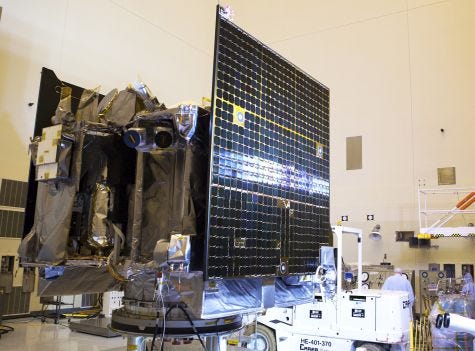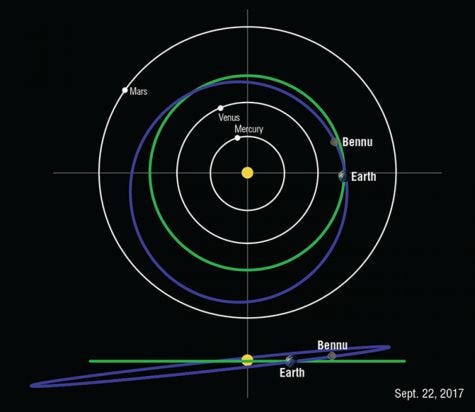The Origins, Spectral Interpretation, Resource Identification, and Security–Regolith Explorer (OSIRIS-REx) arrived at Bennu late in 2018, and has been studying the asteroid ever since. The asteroid containsome of the building blocks of life, making this mission vital in the search for answers to how life began on Earth, and — potentially — other worlds. “OSIRIS-REx spectrometer data show absorptions (“fingerprints”) of complex organic molecules and carbonate minerals on Bennu’s surface… The presence of organics on Bennu suggests that asteroids like Bennu may have brought organic molecules to Earth,” researchers describe in an article published in the journal Science. Carbon and associated molecules were detected on Bennu prior to the arrival of OSIRIS-REx, and that mission will assist researchers searching for answers to the chemical makeup of that enigmatic body. “Bennu is likely rich in organic molecules, which are made of chains of carbon bonded with atoms of oxygen, hydrogen, and other elements in a chemical recipe that makes all known living things. Besides carbon, Bennu also might have another component important to life: water, which is trapped in the minerals that make up the asteroid,” NASA describes. Launched in 2016, OSIRIS-REx searched the asteroid for potential touchdown locations from September 4 to 27. The first sample collection attempt is scheduled for October 20, and the sample is due to arrive on Earth September 23, 2023. “We’ve been working for over a decade toward the upcoming sampling attempt. It’s such an exciting time. The spacecraft will send back data pretty quickly to let us know if the maneuver itself was successful, and it’ll be exciting to see images from the sampling event, which should be sent back within a day,” Joshua Emery, associate professor in NAU’s Department of Astronomy and Planetary Science, stated.
Bennu and me, and spacecraft makes three
Bennu belongs to a class of asteroids know as rubble pile asteroids — which, as the name suggests, are loose amalgamations of smaller pieces, rather than one solid body. New findings from the OSIRIS-REx spacecraft suggest Bennu is stronger and denser in it’s outer layers than inside, like a creme-filled chocolate egg. This finding came from studying minor fluctuations in the gravitational field of the asteroid. “If you can measure the gravity field with enough precision, that places hard constraints on where the mass is located, even if you can’t see it directly,” said Andrew French, at NASA’s Jet Propulsion Laboratory (JPL) Bennu is rotating faster over time, pushing carbon-rich material from its core closer to the surface. This could be bad news for Bennu, as the finding suggests the asteroid may fall apart within a million years. “The sporadic particle ejection events observed at Bennu were fortuitous in terms of gravity field determination. Many of the ejected particles were placed into temporary orbits about Bennu before reimpacting the surface or escaping from the asteroid,” researchers describe in an article published in Science Advances. Bennu is considered a potentially hazardous asteroid, with a 1-in-2,700 chance of striking Earth late in the 22nd Century. This article was originally published on The Cosmic Companion by James Maynard, founder and publisher of The Cosmic Companion. He is a New England native turned desert rat in Tucson, where he lives with his lovely wife, Nicole, and Max the Cat. You can read this original piece here. Astronomy News with The Cosmic Companion is also available as a weekly podcast, carried on all major podcast providers. Tune in every Tuesday for updates on the latest astronomy news, and interviews with astronomers and other researchers working to uncover the nature of the Universe.

